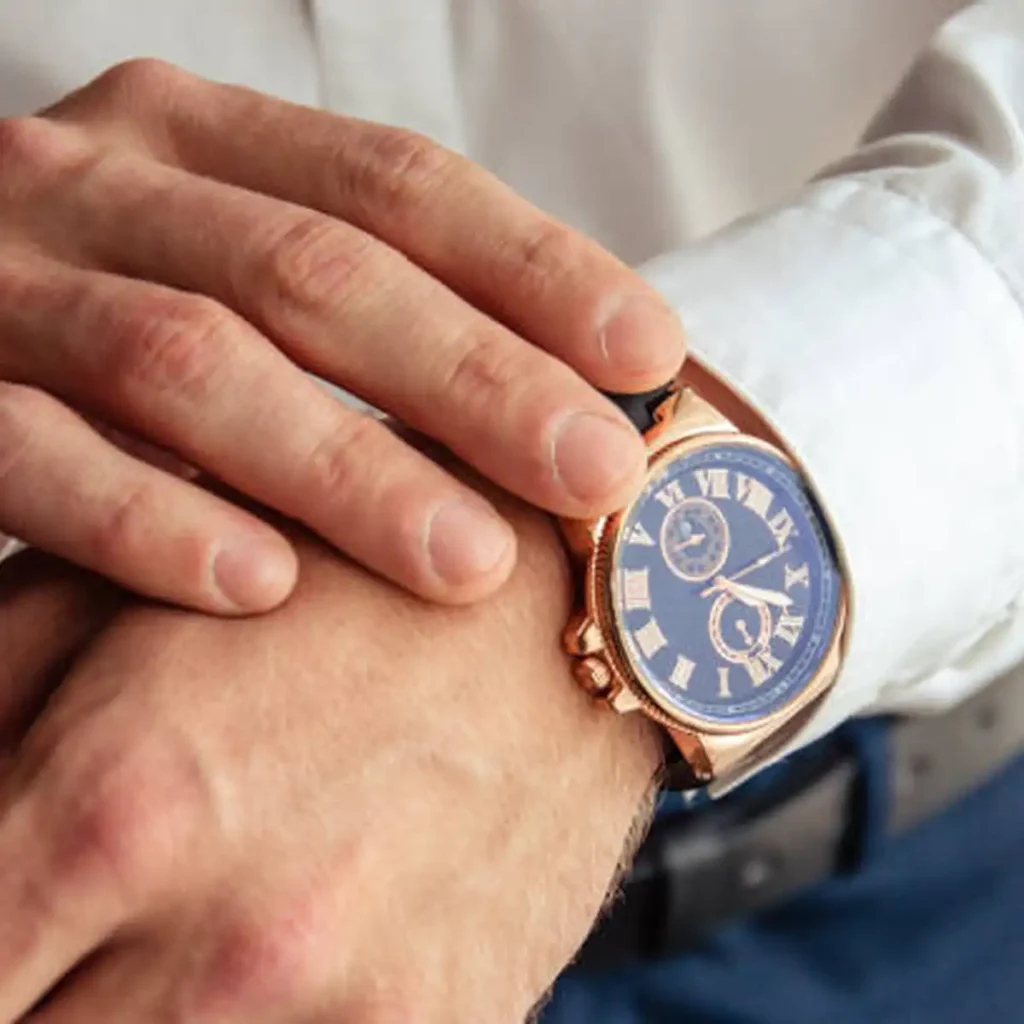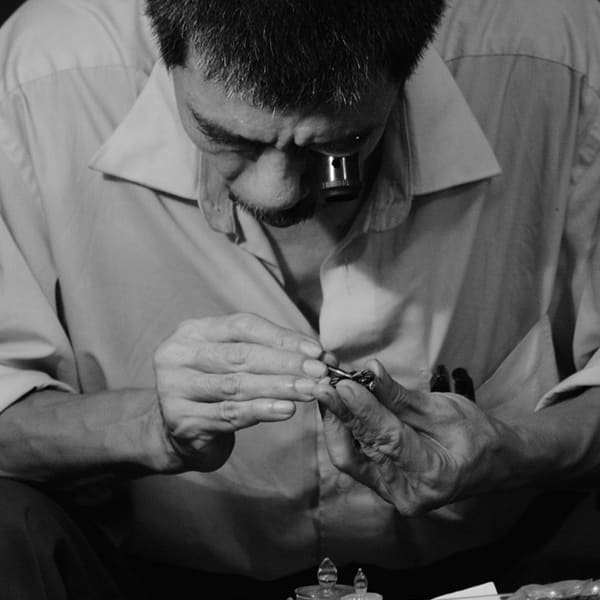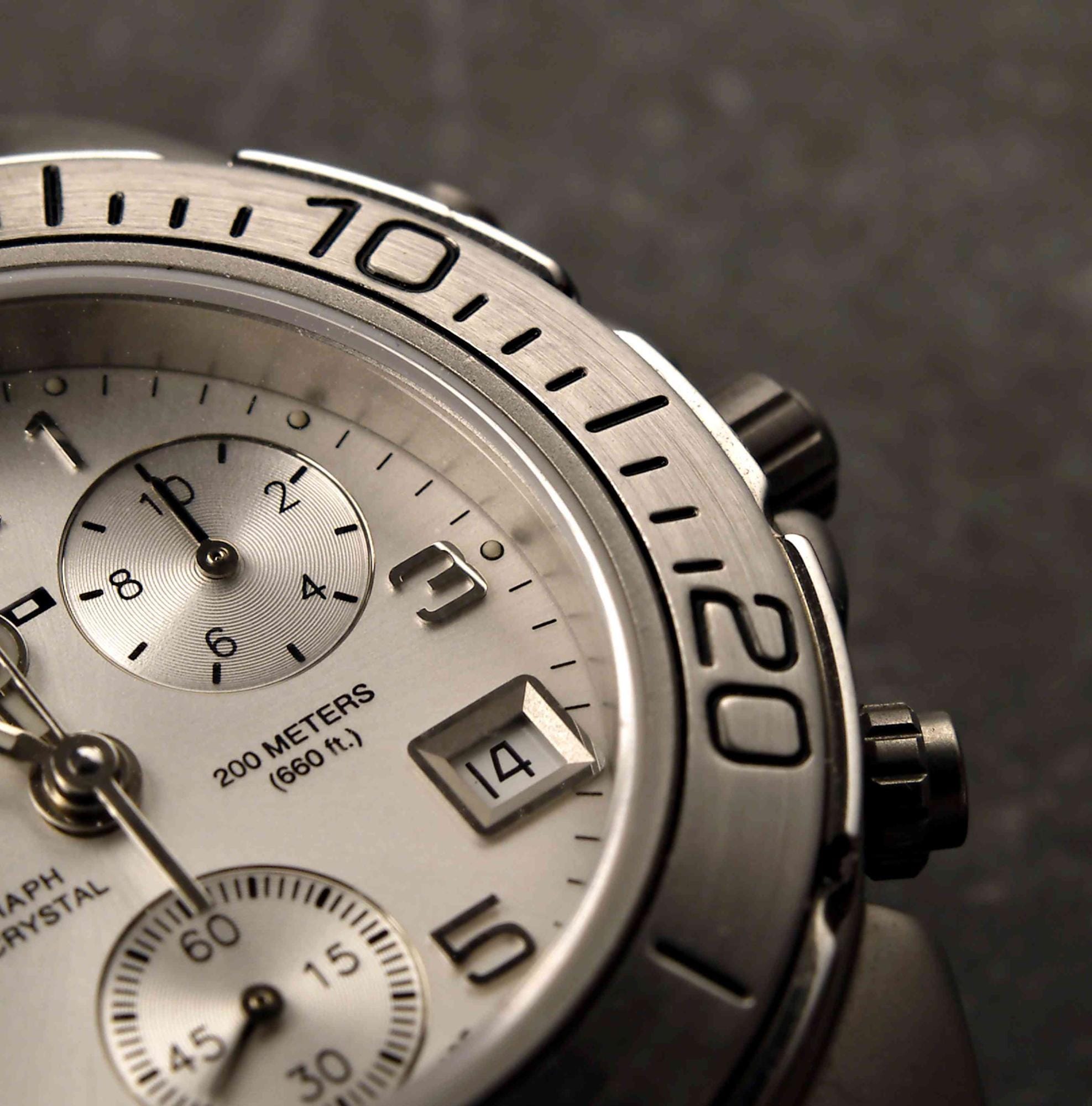A high-performance mechanical watch remains a rare object that works without batteries or software. It is a miniature engine, built from hundreds of parts, powered by wound springs and regulated by an escapement. In a year dominated by ephemeral digital services, buyers are drawn to physical precision they can hold and maintain. The 2025 market reflects a flight to tangible value. Speculative heat that spiked after 2022 has cooled. Prices and sentiment show a shift from hype to substance, and buyers now reward verifiable craft, movement innovation, and enduring design rather than sheer brand noise.
This year’s launches emphasise what a fine watch can do in the real world. We see new escapements, including a headline system from Rolex, ultra-thin engineering from Audemars Piguet, and progress in materials science from Parmigiani Fleurier and IWC. At the same time, sizes have settled into practical territory and colours have softened. The result is a catalogue that suits first-time luxury buyers, seasoned collectors, and investor-minded enthusiasts alike. What follows is a rigorous assessment of 10 watches that define the year, focusing on calibre architecture, power reserve, chronometric performance, case engineering, day-to-day wearability, and long-term collectability.
Fun fact: The word chronometer originally referred to any precision timekeeper, but today it usually means a watch tested by COSC to run within -4 to +6 seconds per day in controlled conditions.
How We Selected The 2025 Top 10
We applied strict, transparent criteria. Relevance mattered first. Each model is a 2025 release or a late-2024 carryover that still drives the conversation. Our scope is global, with regional limited editions excluded to keep comparisons fair. We imposed a cap of two models per brand to avoid skew. We grouped prices in clear bands: under £10,000, £10,000–£30,000, £30,000–£100,000, and £100,000+.
Priority scoring weighted tangible factors: movement innovation, quality of finishing, accuracy standards, case and bracelet engineering, water resistance, design coherence, day-to-day comfort, and collectability outlook. Prices are quoted in GBP and include VAT when applicable. Where unavailable, we estimated in CHF or USD. The commentary is grounded in a UK lens, reflecting market dynamics in Bond Street, Mayfair, and Knightsbridge.
The Ranked Top 10 For 2025
Each entry summarises why the watch matters in 2025, what is inside the case, and the practical considerations that buyers should weigh.
1 Rolex Land Dweller
Rolex has introduced a genuinely new platform. The Land Dweller carries the 5 Hz Calibre 7135 with the patented Dynapulse escapement that uses silicon components. The case is strikingly slim at 9.8 mm and pairs with an integrated Flat Jubilee bracelet. Accuracy claims meet the Superlative Chronometer standard at -2 to +2 seconds per day. The package challenges the high-beat territory held by Grand Seiko and pushes anti-magnetic performance toward Omega’s benchmarks. As a daily wearer, the watch is compact, legible, and rated to 100 metres.
Why it ranks first: it signals a new technical era for the industry leader rather than a minor tweak. It is also the most influential launch for 2025, with demand already outstripping supply. Expect a very high market premium, since Rolex steel sports watches with new calibres and integrated designs are allocation-driven. Risks include constrained access for non-VIP clients and reduced strap versatility due to the integrated architecture.
Key specs: 40 mm White Rolesor case, automatic Calibre 7135 at 5 Hz, about 66 hours power reserve, integrated steel bracelet, Chromalight display, 100 m water resistance. UK MSRP listed at about £13,050, with reported secondary prices far higher.
2 Patek Philippe Calatrava 6196P
The 6196P returns the Calatrava to its quiet centre. At 38 mm in platinum with a rose-gilt opaline dial, it channels the spirit of the Ref. 96 while meeting modern expectations. The manual Calibre 30-255 PS runs for 65 hours from twin barrels and bears the Patek Philippe Seal, which demands tight accuracy and superlative finishing across visible and hidden components. This is a purist’s dress watch, focused on proportion, clarity, and tactile quality.
Why it ranks: it reestablishes a reference point for time-only Haute Horlogerie. The finishing, dial execution, and restrained form set a standard for elegant daily dress wear. Water resistance is 30 m, suitable for rain and hand washing only. Availability is managed by application at top-tier retailers.
Key specs: 38 mm platinum case, manual Calibre 30-255 PS at 4 Hz, small seconds at 6, 65 hours power reserve, Patek Philippe Seal, alligator strap, about £40,370 in the UK.
3 Audemars Piguet Royal Oak Jumbo RD5
The finale of AP’s Research & Development series delivers a flyback chronograph with a flying tourbillon inside the classic 39 mm Royal Oak Jumbo footprint, with a total thickness of 8.1 mm. The peripherally wound Calibre 8100 is the micro-engineering headline, freeing vertical space while maintaining torque. The case is titanium, while the bezel, crown, and pushers are made of Bulk Metallic Glass. The result is light, rigid, and visually distinct.
Why it ranks: a grand complication package in a case thinner than many time-only sports watches. The engineering consequence is limited water resistance at 20 m, which sets usage boundaries. Production is tightly controlled with application-only allocation.
Key specs: 39 mm titanium case, 8.1 mm thickness, automatic Calibre 8100 at 3 Hz, 72 hours power reserve, flying tourbillon, flyback chronograph, BMG components, bracelet in titanium with BMG links. Estimated UK VAT-inclusive price near £245,000.
4 Grand Seiko Tokyo Lion Tentagraph
Grand Seiko’s Tentagraph refines the high-frequency integrated chronograph formula. The Calibre 9SC5 runs at 5 Hz, uses a column wheel and vertical clutch, and still delivers a 72-hour reserve. The 2025 Tokyo Lion version adopts Brilliant Hard Titanium, a hardened alloy that resists scratches and reduces weight. The angular 43 mm case and textured dial split opinion, yet the specification is a match for any peer under £15,000.
Why it ranks: technical depth and real-world durability. The 200 m rating, legibility, and robust movement place it among the most capable modern sports chronographs. The trade-off is size at 43 mm by 15.6 mm, which will challenge smaller wrists.
Key specs: 43 mm case in Brilliant Hard Titanium, Calibre 9SC5 at 5 Hz, 72 hours power reserve, column-wheel chronograph, 200 m water resistance, integrated rubber strap, UK price about £14,800.
5 Chopard L U C Quattro Mark IV
The Quattro is a connoisseur’s piece. Calibre L.U.C 98.09-L provides 216 hours of power reserve from four stacked barrels and bears both COSC certification and the Poinçon de Genève. The 39 mm platinum case and ice-blue dial present classic restraint, while the quick-change strap system adds practical versatility. This is a thorough exercise in movement finishing and energy management.
Why it ranks: unmatched blend of finishing and specification at the price. The movement architecture, long reserve, and documented quality standards put it in the same conversation as the top Geneva houses. Water resistance is 30 m, which keeps it strictly dress.
Key specs: 39 mm platinum case, manual 98.09-L at 4 Hz, 216 hours reserve, small seconds, date, quick-change straps, approximate UK price £44,000.
6 Cartier Santos De Cartier Titanium Large Model
Cartier’s 2025 update shifts the Santos into bead-blasted titanium, improving scratch resistance and reducing weight. The watch remains a 100 m daily piece with a low 9.38 mm profile and Cartier’s excellent QuickSwitch system, allowing instant changes between the titanium bracelet and the included grey nubuck alligator strap. The automatic Calibre 1847 MC provides reliable accuracy and anti-magnetic parts, though with a modest 42-hour reserve.
Why it ranks: an iconic design adapted for modern daily wear. The combination of lightness, quick strap changes, and proper water resistance makes it a strong all-rounder under £10,000.
Key specs: 39.8 mm width, 47.5 mm lug-to-lug, 9.38 mm thickness, titanium case and bracelet, 100 m water resistance, Calibre 1847 MC at 4 Hz, UK price about £9,550.
7 Parmigiani Fleurier Tonda PF Sport Chronograph Ultra Cermet
Parmigiani advances material science with a full Ultra-Cermet case, including middle, bezel, and pushers. The visual effect is a metallic sheen with ceramic hardness. Inside is the COSC-certified Calibre PF070-CSND, a high-frequency integrated chronograph running at 5 Hz with a 65-hour reserve. The London Grey dial features a black or treatment for a fine metallic tone.
Why it ranks: it marries a technical material with a genuinely high-end movement. It is a strong alternative for buyers who want a contemporary sports piece that is not seen on every wrist. The caution is brittleness under extreme shock, a trait shared with ceramics.
Key specs: 42.5 mm Ultra-Cermet case, 13.3 mm thickness, Calibre PF070-CSND at 5 Hz, 65 hours reserve, 100 m water resistance, rubber strap, UK price about £38,800.
8 IWC Pilots Watch Chronograph 44.5 Lake Tahoe
IWC continues its leadership in coloured ceramics with Lake Tahoe. The white ceramic case, black flieger dial, and white rubber strap make a clear visual statement. The in-house Calibre 69380 uses a column wheel and offers a 46-hour reserve. The package remains a lifestyle sports watch rather than a pure tool, with 60 m water resistance and a tall profile at 15.7 mm.
Why it ranks: a cohesive design language backed by reliable mechanics. Availability is broad and discounting can appear on the secondary market, which helps buyers seeking value below list.
Key specs: 44.5 mm ceramic case, 15.7 mm thickness, Calibre 69380 at 4 Hz, day and date, 60 m water resistance, UK price about £10,100.
9 Nomos Club Sport Neomatik Worldtimer
Nomos delivers one of the year’s strongest propositions. The DUW 3202 is a true in-house automatic movement with a pusher-operated world time function. The 40 mm steel case is only 9.9 mm thick and is rated to 100 m with a screw-down crown. The new silver and blue dials are crisp and highly legible. At under £4,000, there is little that competes on features, finishing, and coherent design at this level.
Why it ranks: best value for buyers who want a complication they will use. The reserve is an average 42 hours, which is the main compromise. For travel, the caller-style world-timer requires manual home-time changes when crossing zones, which some find less intuitive than flyer GMT formats.
Key specs: 40 mm steel, 9.9 mm thickness, DUW 3202 at 4 Hz, world time with city disc, 100 m water resistance, steel bracelet, UK price about £3,940.
10 Rolex Oyster Perpetual 36 Pistachio
The OP 36 remains the purest expression of the Rolex formula. The 2025 pastel dial set introduces a matte pistachio tone that is fresh yet restrained. Inside is the Calibre 3230 with the Chronergy escapement and a 70-hour reserve, cased to 100 m with the familiar Oyster bracelet and Easylink comfort extension. As a unisex daily watch, it is almost impossible to fault on fundamentals.
Why it ranks: the best entry into genuine Rolex quality if obtained at list. Demand and allocation dynamics are the primary obstacles. Some will also prefer a date display for daily use.
Key specs: 36 mm steel case, 11.7 mm thickness, Calibre 3230 at 4 Hz, 70 hours reserve, 100 m water resistance, Oyster bracelet with Easylink, UK price estimated near £5,400, with secondary asking prices higher.


What The Specification Patterns Reveal In 2025
Looking across the list, a clear pattern emerges for a modern daily all-rounder. The practical sweet spot clusters around 38–40 mm in diameter, about 10 mm thickness, a 70-hour reserve, and 100 m water resistance. The Land Dweller, Cartier Santos Titanium, and Nomos Worldtimer sit close to that target. At the extremes we see trade-offs: the Audemars Piguet RD5 pursues ultra-thin engineering to 8.1 mm, which limits water resistance to 20 m. On the other side, the Grand Seiko Tentagraph and the IWC Lake Tahoe adopt larger cases for presence and shock resistance, accepting thickness and weight.
Category Winners The Best Of 2025
Best Overall: Rolex Land Dweller. A new model line with a new escapement at 5 Hz defines the decade as much as the year.
Best Innovation: Audemars Piguet Royal Oak RD5. A flying tourbillon and flyback chronograph in an 8.1 mm case changes expectations for thin sports cases.
Best Finishing: Chopard L U C Quattro Mark IV. The Poinçon de Genève sits alongside long reserve and clean aesthetics.
Best Complication: Grand Seiko Tentagraph. High-beat integrated chronograph with 72 hours reserve and serious water protection.
Best Integrated Bracelet: Rolex Land Dweller. The Flat Jubilee integrates with millimetre precision for comfort and flow.
Best Daily Wear: Cartier Santos Titanium. Light, tough, 100 m, and fast strap changes.
Best Under £10k: Nomos Club Sport Neomatik Worldtimer. In-house movement, useful travel function, and 100 m at under £4,000.
Best Value: Nomos Club Sport Neomatik Worldtimer. Design integrity and complication at a four-figure price.
2025 Trends Materials Sizes Colours And Complications
Materials: Titanium and technical composites dominate. We see full titanium cases at Cartier, Brilliant Hard Titanium at Grand Seiko, and advanced composites such as Cermet at Parmigiani and BMG at Audemars Piguet. The target is practical durability with refined surface finishing.
Sizes: The 38–40 mm range is back at the centre. Significant launches at 38 mm, 39 mm, and 40 mm suggest a durable shift.
Colours: Muted and matte tones replace vibrant novelty. Pastel dials such as pistachio and refined industrial greys such as London Grey align with the move toward functional luxury.
Bracelets: Integrated designs are now a mainstream category, with the Land Dweller demonstrating how a market leader executes the idea.
Complications: Useful travel and high-frequency movements drive demand. World time, GMT, and 5 Hz escapements are the talking points that matter for owners who use features daily.
Essential Knowledge A 2025 Buyers Guide
Water Resistance And What Swim Safe Really Means
30 m is not swim-safe. It is designed for rain and hand washing. 50–60 m can handle gentle pool use. 100 m is the reliable swim-safe minimum, provided crowns are screwed down and seals are maintained. Dynamic pressure from diving into a pool can exceed static test ratings. Soap and heat accelerate gasket wear.
Accuracy Standards In Context
COSC certifies movements to an average of -4 to +6 seconds per day before casing. METAS adds anti-magnetism at 15,000 gauss and tests cased watches to 0 to +5 seconds, along with power reserve and water resistance. Rolex Superlative Chronometer targets -2 to +2 seconds per day on the fully assembled watch. The Patek Philippe Seal combines tight timing tolerances with codified finishing and a lifetime service promise.
The Real Cost Of Ownership
A mechanical watch is a serviceable machine. Routine maintenance every 5–10 years includes complete disassembly, cleaning, lubrication, and seal replacement. UK owners can expect about £800 for a standard Rolex service at an RSC, rising with parts or cosmetic work. Omega and Cartier services commonly start around £400–£600 at authorised outlets. Skilled independents can service many standard movements for £250–£500, although warranty implications apply when a watch is still covered by the manufacturer.
Tech Glossary For 2025
Dynapulse Escapement: Rolex’s new silicon-enabled system in Calibre 7135 that supports a 5 Hz rate with high efficiency and magnetic resistance.
Cermet: A ceramic-metal composite engineered for hardness and a metallic sheen, used by Parmigiani Fleurier for cases and pushers.
Bulk Metallic Glass: An amorphous metal alloy with high hardness and resilience, used by Audemars Piguet for the RD5 bezel and pushers.
Market Context What The Data Signals For 2025
Secondary prices have stabilised after the post-pandemic surge, taking heat out of the most speculative trades. Indices tracking broad markets show flat movement for many mainstream sports models, while gains concentrate in classical houses and rare pieces. The auction market remains strong at the very top, with museum-grade vintage and low-volume independents drawing record bids. For production watches, value now sits in obtaining the right reference at retail, building relationships with authorised retailers, and holding for the medium term rather than chasing quick flips.
Availability In The UK
Allocation remains the governing force for certain references. Watches of Switzerland, Goldsmiths, and Mappin & Webb control practical access for many brands. Waitlists can be open, yet real allocation is often tied to purchase history and clarity of request. Patek Philippe dress references move through applications at salons and top dealers. Audemars Piguet has moved to boutique-centred distribution with tight client lists. Independent specialists in Mayfair, such as A Collected Man, remain the reference point for rare independent pieces and historically important vintage.
Frequently Asked Questions For 2025
Is a luxury watch a good investment
In select cases. The broad flip trade is finished. Investment logic now rests on three pillars: secure a high-demand reference at list and hold, pursue true scarcity in independents and blue-chip vintage, or buy for intrinsic value where quality per pound is unusually high.
How do I join a Rolex waitlist in the UK
Visit an authorised retailer in person, state the exact reference, and be prepared for a relationship-based process. Keep expectations grounded. In many cases the effective price for immediate acquisition reflects the secondary market premium.
What is the best first luxury watch
Under £5,000, the Nomos Club Sport Neomatik Worldtimer gives you an in-house calibre, useful travel complication, 100 m water resistance, and a coherent design language. Under £10,000, the Cartier Santos Titanium offers durability, quick strap changes, and a slim profile. The Rolex OP 36 is the classic answer if you can secure it at MSRP.
Conclusion What 2025 Teaches The Serious Buyer
The lesson of 2025 is clarity. The market now rewards designs that solve real problems and movements that deliver measurable gains. At the top of the tree we see bold engineering such as peripheral winding to reclaim thickness, high-frequency escapements that stabilise timing, and materials that resist wear without flashy gimmicks. At accessible levels, brands that combine authentic in-house work with practical specifications are winning confidence.
For the first-time luxury buyer, a shortlist anchored by the Cartier Santos Titanium and the Nomos Worldtimer covers most needs with little compromise. For seasoned collectors, the Chopard L U C Quattro offers finishing and endurance that match its quiet intent, while the Audemars Piguet RD5 expands what is possible in thin sports watchmaking. For investors, the game has moved to the extremes: either true scarcity or disciplined retail access.
Think of the 2025 market like a well-regulated movement. Each gear must mesh precisely to keep time. Innovation is the escape wheel that controls energy, finishing is the fine adjustment that maintains harmony, and ownership discipline is the constant force spring that keeps everything steady. Choose on evidence. Service on schedule. Wear with purpose.











